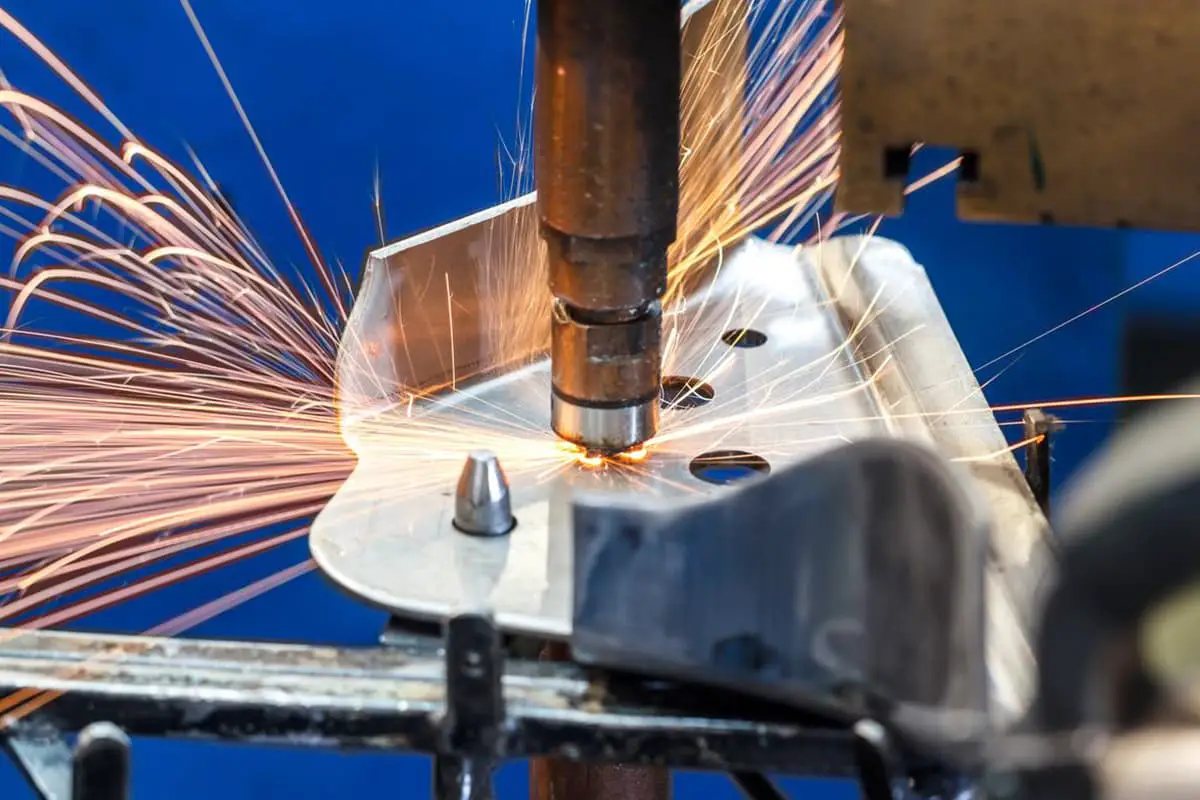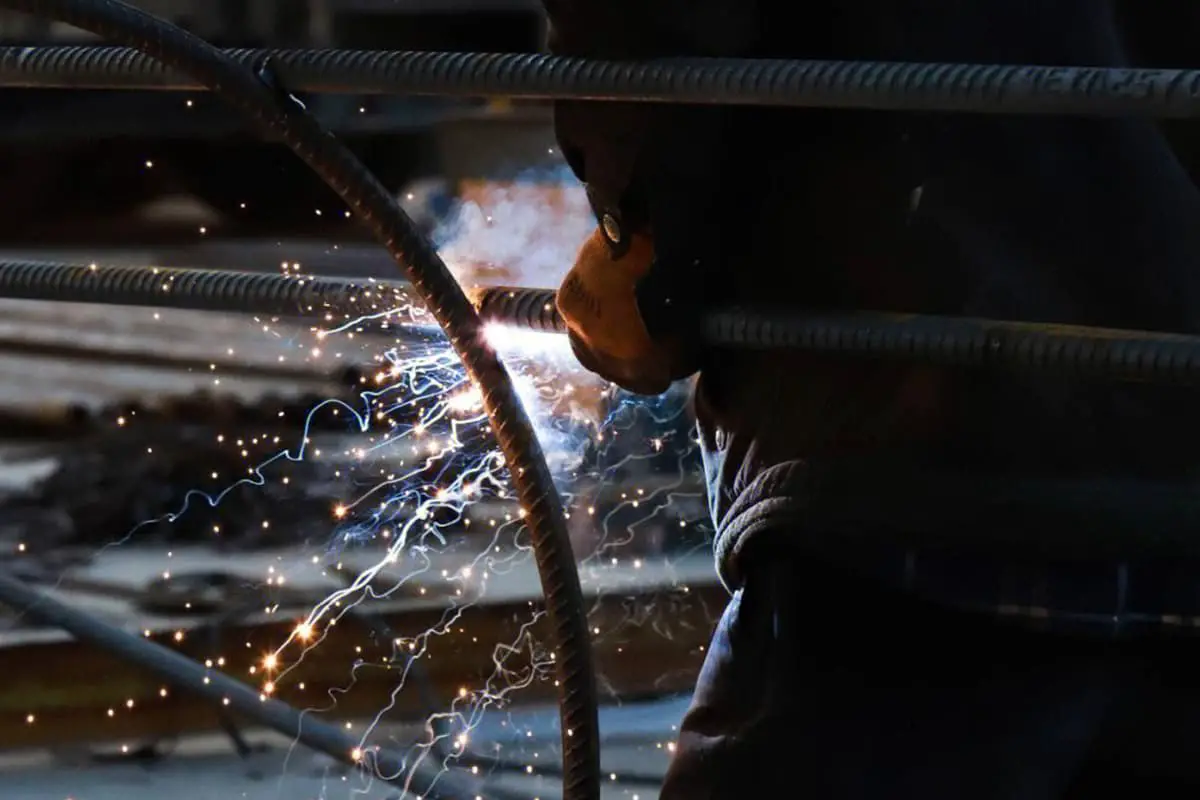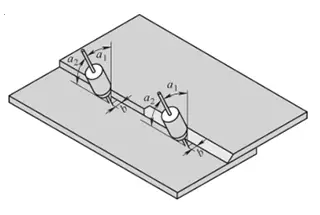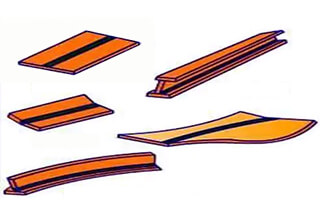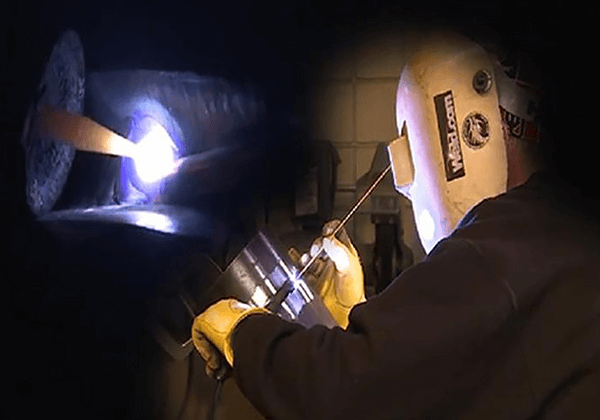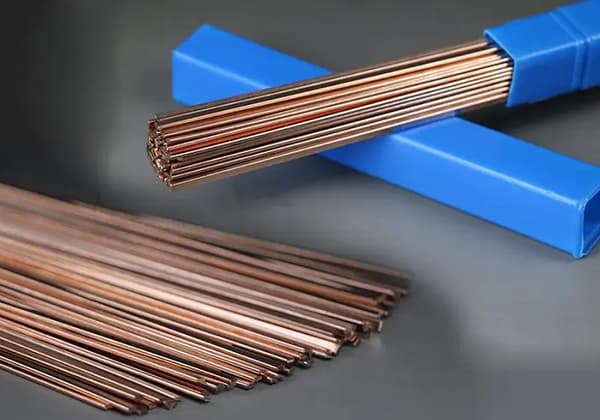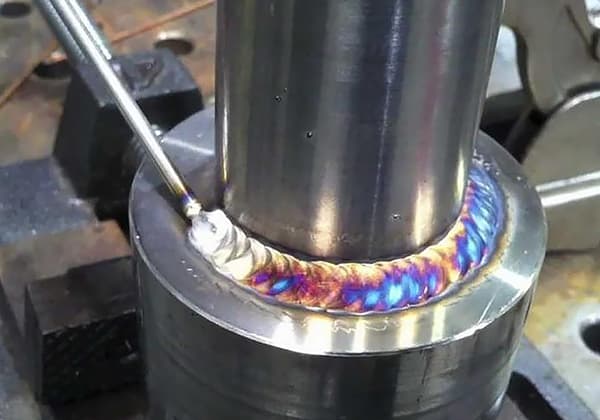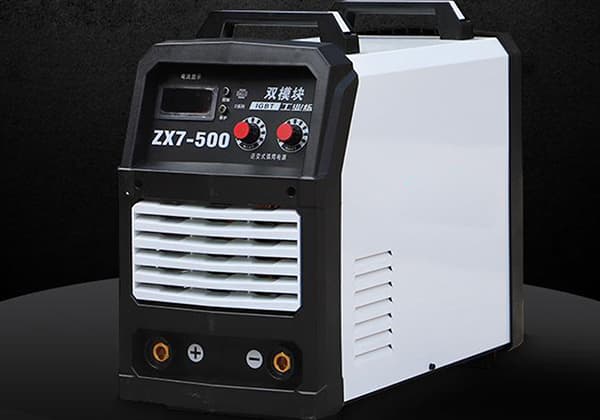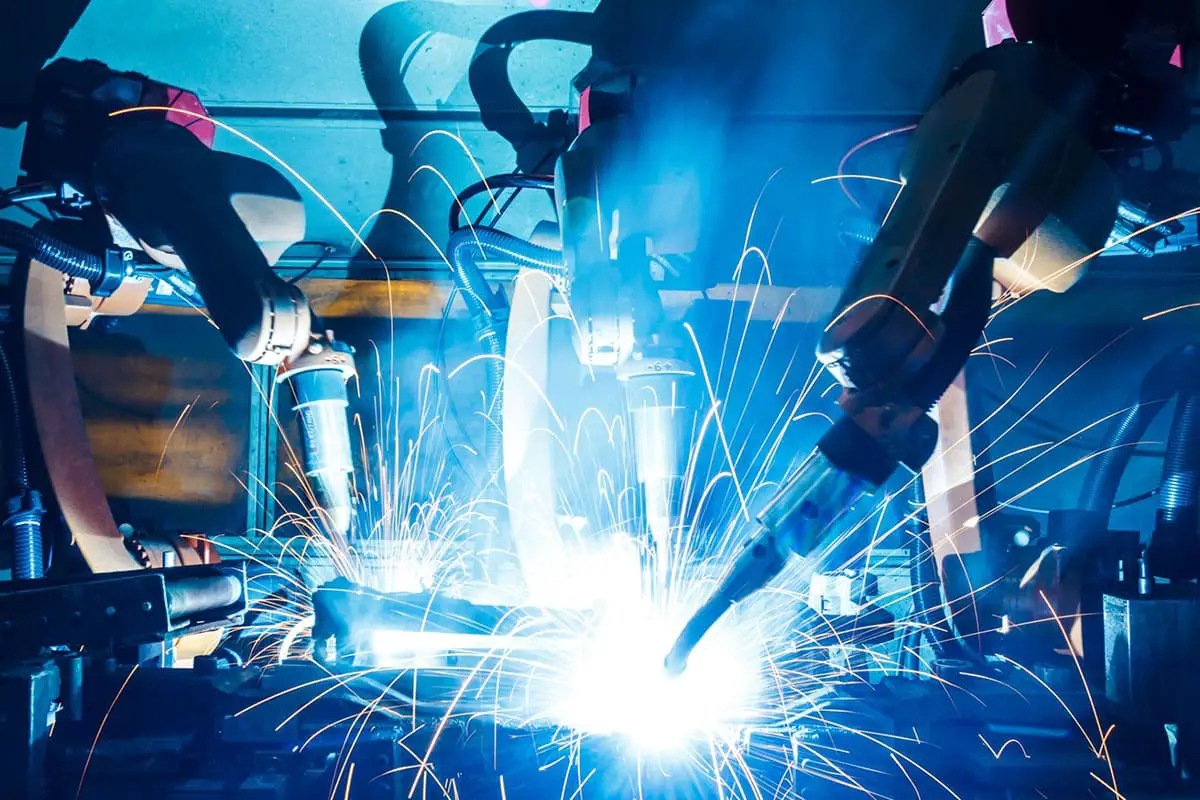
Ever wondered how those sleek car bodies are welded together so seamlessly? This article dives into the world of spot welding machines, explaining their components, types, and applications across industries like automotive and electronics. Learn how these machines create strong, reliable welds and discover the key factors to consider when choosing one for your needs. From safety tips to the latest innovations, this comprehensive guide offers invaluable insights for anyone interested in the art and science of spot welding.
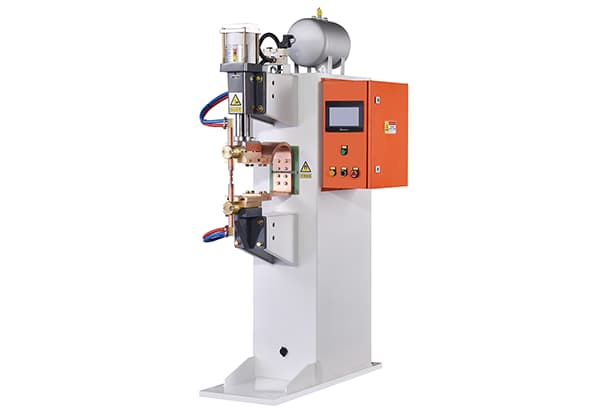
Spot welding is a precision resistance welding technique that utilizes cylindrical electrodes to create localized fusion between two or more overlapping metal sheets or components. This process is characterized by its speed, efficiency, and ability to produce strong, discrete weld nuggets without the need for filler material.
In the spot welding process, the workpieces are first clamped between two water-cooled copper alloy electrodes, applying controlled pressure to ensure intimate contact. A high-intensity electric current, typically ranging from 1,000 to 100,000 amperes, is then passed through the electrodes for a precisely timed duration, usually measured in cycles of 60 Hz AC power (1 cycle = 1/60 second). This current generates localized resistance heating at the interface of the workpieces, causing the metal to melt and form a molten nugget. Upon cooling and solidification, this nugget creates a strong metallurgical bond between the pieces.
Spot welding is predominantly employed in the automotive and aerospace industries for joining thin sheet metal components, typically with thicknesses ranging from 0.5 to 3 mm. It is particularly well-suited for high-volume production of automobile body panels, frames, and structural components, as well as aircraft fuselage assemblies. The process offers several advantages, including rapid cycle times, minimal heat-affected zones, and the ability to automate easily, making it ideal for robotic welding lines in modern manufacturing facilities.
While spot welding excels in many applications, it has limitations. It is not suitable for welding sealed containers due to the potential for trapped gases and the discontinuous nature of the welds. Additionally, the process is generally limited to overlapping joints and may not be appropriate for materials with high electrical or thermal conductivity without special considerations.
As a subset of resistance welding, spot welding shares similarities with other techniques such as seam welding and projection welding. However, its distinctive feature lies in its ability to create discrete, localized welds rapidly and repeatedly, making it an indispensable process in modern metal fabrication and assembly operations.

Spot welding machine is a type of resistance welding. During welding, it uses upper and lower cylindrical electrodes to apply pressure, ensuring tight contact between the surfaces of the workpieces.
Then, an electric current is passed through, filling the electrode rod with current, and applying resistance heating to melt the contact area of the workpieces. After cooling, a weld point is formed.
Depending on the usage scenario and welding objects, spot welding machines are further divided into medium frequency spot welding machines, precision spot welding machines, and energy storage spot welding machines.
Due to its high welding efficiency and ease of automation, the application of spot welding machines is becoming increasingly widespread, and now almost every industry can use spot welding equipment.
Main application fields of spot welding machine:
(1) Automobile and aviation industry. Examples include the overlap of thin sheet stamping parts in car cabins and carriages, the bonding of carriage side walls and roofs, trailer board thin sheets with shaped steel structure and skin structure, as well as automobile components.
(2) Electronics industry. Examples include battery, capacitor cover plates, electrical switches, electronic components, and silk screens.
(3) Household appliances industry, for example, refrigerator cabinet shells.
(4) Irregular workpieces, etc.

Main components of the equipment:
The whole machine includes: welding host (body), flexible welding cylinder, AC welding power supply and control system, upper and lower electrode parts, water cooling system, safety mechanism, etc.
(1) Welding host (body): adopts our company’s mature welding frame to ensure that the rigidity required by the cylinder can be fully satisfied during operation.
(2) Welding cylinder: equipped with a large diameter air inlet and a quick response cylinder with built-in buffering spring. The piston rod and guide rod are made of high-quality steel, quenched and tempered, with a surface hardness of over 0.8 after chrome plating and grinding.
The piston cylinder is processed by hard aluminum to prevent rust on the piston from affecting the gas-steel quality. The cylinder base is made of cast aluminum material with self-lubrication function, which reduces the friction coefficient of the cylinder. It adopts high-quality sealing rings imported from Japan, has good sealing performance, durability, and good fixed following performance.
(3) AC welding power supply and control system: adopts microcomputer control, can store 15 sets of welding programs, and can be independently adjusted to easily meet the welding requirements of products with different specifications and shapes.
The resistance welding transformer is composed of silicon steel sheets with a magnetic induction of 15000 Gauss, and is internally forced water-cooled, with small vibration, better thermal conductivity, high power factor, high safety factor, and large output power. It has a long service life, low noise, and compact and reasonable structure.
(4) Upper and lower electrode parts: adopt high-quality, durable and wear-resistant hardness of tungsten zirconium copper electrodes, and the electrodes are all internally water-cooled to reduce the electrode durability caused by high temperature when the electrode material is electrified, thereby ensuring the service life of the electrodes.
(5) Water cooling system: divided into four parts: transformer group water cooling, upper electrode water cooling, lower electrode water cooling, and output copper block water cooling, and equipped with overheat protection to ensure the normal operation of the equipment without damage.
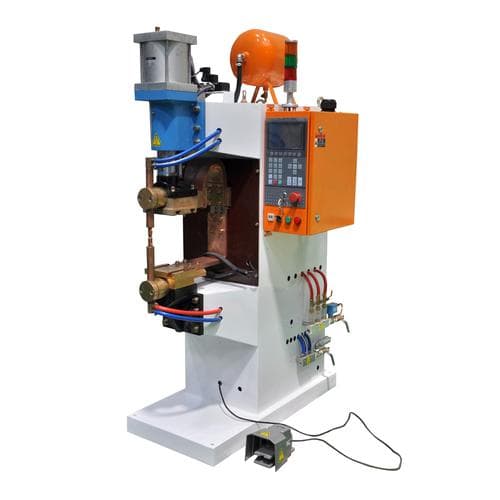
Spot welding machines can be categorized based on various criteria, reflecting their diverse applications and functionalities in industrial manufacturing:
1. Purpose of Use:
2. Number of Simultaneous Welding Points:
3. Conduction Method:
4. Pressure Mechanism Transmission:
5. Automation Level:
6. Installation Method:
7. Movable Electrode Motion:
Each type offers specific advantages for different welding applications, material thicknesses, and production requirements. The selection of a spot welding machine depends on factors such as production volume, material properties, joint configuration, and required weld quality.
Due to its operational efficiency and versatility, spot welding has become the predominant joining method for sheet metal fabrication in many manufacturing industries. However, the diverse range of spot welders available in the market can complicate the selection process. This article will outline the critical factors to consider when choosing a spot welding machine for your specific application.
The performance of a spot welder is primarily determined by three key parameters: welding current, weld time, and electrode force. Traditional spot welders employ various pressure application systems, including manual foot pedals, electrically-driven cams, pneumatic systems (requiring an external air source), and, less commonly, hydraulic systems (typically used in specialized applications like vacuum diffusion welding).
The importance of electrode force in spot welding is often underestimated. During the formation of the weld nugget, both excessive and insufficient pressure can lead to defects such as cracks or expulsion in the welded joint. Overly high pressure can also result in shrinkage cavities. Therefore, a high-quality spot welder should feature a pressure system with excellent follow-up performance, capable of precise and instantaneous force control. An optimal pressure profile is fundamental to achieving consistent, high-quality spot welds.
To enhance pressure transmission accuracy and prevent cylinder body misalignment, the use of linear bearings is an ideal solution. Additionally, implementing closed-loop current control systems helps mitigate large current fluctuations, ensuring weld consistency and quality.
When selecting a spot welding machine, consider the following factors:

Instructions for using a spot welder:
1. When welding, adjust the position of the electrode rod so that the electrode just presses against the workpiece and the electrode arms remain parallel to each other.
2. The selection of the current adjustment switch level can be based on the thickness and material of the workpiece. After the power is turned on, the power indicator light should turn on, and the electrode pressure can be adjusted by adjusting the spring pressure nut to change its compression degree.
3. After completing the above adjustments, the cooling water can be turned on first and then the power can be turned on for welding preparation. The welding process is as follows: place the workpiece between the two electrodes, step on the foot pedal, make the upper electrode contact and press against the workpiece.
When the foot pedal continues to be pressed, the power contact switch is turned on, and the transformer starts to work, so that the secondary circuit is electrified to heat the workpiece. When the welding time is up, release the foot pedal, the electrode will rise, and the power will be cut off by the spring tension before returning to its original state, ending the single spot welding process.
4. Workpiece preparation and assembly: Steel workpieces must be cleaned of all dirt, oil, oxide scales, and rust before welding. For hot-rolled steel, it is best to acid wash, sand blast or remove oxide scales with a grinding wheel. Although unwashed workpieces can still be spot welded, it seriously reduces the service life of the electrode and lowers production efficiency and quality. Thin-coated medium to low carbon steel can be spot welded directly.
Process data:
In addition, users can refer to the following process data when using a spot welder:
Welding time: When welding medium to low carbon steel, this machine can use strong specification welding (instantaneous current) or weak specification welding (long-term current). Strong specification welding should be used for mass production as it can improve productivity, reduce energy consumption and minimize workpiece deformation.
Welding current: The welding current depends on the size, thickness, and contact surface of the workpiece. Generally, the higher the metal conductivity and electrode pressure, the shorter the welding time. The required current density also increases accordingly.
Electrode pressure: The purpose of applying pressure to the workpiece with the electrode is to reduce the contact resistance at the weld and ensure the pressure required for the weld to form.
Safety:
1. For on-site use, a shed that is rainproof, moisture-proof, and sun-proof should be provided, and corresponding fire-fighting equipment should be installed.
2. Flammable and explosive materials such as oil, wood, oxygen cylinders, acetylene generators, etc. cannot be stored within a 10m radius of the welding site.
3. Welding operators and assistant personnel must wear labor protection equipment as required by regulations. Safety measures must also be taken to prevent accidents such as electric shock, falling from heights, gas poisoning, and fires.
4. The secondary tap connection copper plate should be pressed tightly, and the connecting pillar should have a washer. Before closing, check the connection nuts, bolts, and other components in detail and confirm that they are intact, complete, and without looseness or damage. Protective covers are provided at all connecting pillars.
5. Before use, check and confirm that the primary and secondary line connections are correct, the input voltage meets the specifications on the welding machine’s nameplate, and you understand the types and applicable ranges of spot welding machine welding currents. After turning on the power, do not touch the live parts of the primary circuit. Protective covers must be installed at the junctions of the primary and secondary lines.
6. When moving the spot welder, cut off the power supply and do not move the welding machine by dragging the cable. If there is a sudden power failure during welding, the power must be immediately cut off.
7. When welding non-ferrous metals such as copper, aluminum, zinc, tin, lead, etc., it must be done in a well-ventilated area, and welding personnel must wear a gas mask or a respirator.
8. When multiple spot welders are used together, they should be connected to a three-phase power supply network to balance the three-phase loads. The grounding devices of multiple welding machines should be connected separately at the grounding poles and not in series.
9. Welding is strictly prohibited on pressure pipelines, containers containing flammable and explosive materials, and stressed components that are in operation.
10. When welding preheated parts, a baffle should be installed to isolate the radiant heat emitted by the preheated workpiece.
Installation and Maintenance:

The welder must be properly grounded before use to ensure personal safety. Before using the welder, use a 500V megohmmeter to test the insulation resistance between the high-voltage side of the welder and the chassis to ensure that it is not less than 2.5 megohms before turning on the power.
When checking and repairing, cut off the power supply first before opening the box for inspection. The welder should be watered before welding, and it is strictly forbidden to work without water.
The cooling water should be supplied with industrial water at a temperature of 5-30℃ and a water inlet pressure of 0.15-0.2 MPa. In winter, after the welder has finished working, compressed air should be used to blow the water in the pipeline to prevent the water pipe from freezing and cracking.
The welding cables should not be too thin or too long, and the voltage drop during welding should not exceed 5% of the initial voltage. The initial voltage should not deviate from the power supply voltage by more than ±10%. When operating the welder, wear gloves, aprons, and protective glasses to avoid burns caused by flying sparks. The sliding parts should be kept well lubricated, and metal spatter should be removed after use.
After the welder has been used for 24 hours, all screws should be tightened once. Pay special attention to the connecting screws between the copper soft joint and the electrode arm, which must be tightened. After use, the oxide between the electrode rod and the electrode arm should be cleaned frequently to ensure good contact.
If the AC contactor does not close firmly when the welder is in use, it means that the grid voltage is too low. Users should first solve the power supply problem before using it when the power supply is normal. It should be pointed out that if there are quality problems with the main components of a newly purchased welder within half a month, a new welder or main component can be replaced.
The main part of the welder is guaranteed for one year and provides long-term maintenance services. In general, after the user notifies the factory, the service will be in place within three to seven days depending on the distance. Welder damage caused by user reasons is not covered by the warranty. Vulnerable parts and consumables are not covered by the warranty.
The contact area of the electrode determines the current density, and the resistivity and thermal conductivity of the electrode material affect heat generation and dissipation. Therefore, the shape and material of the electrode have a significant impact on the formation of the weld nugget. As the electrode tip deforms and wears, the contact area increases, and the strength of the weld joint will decrease.
Oxides, dirt, oil, and other impurities on the surface of the workpiece increase contact resistance. An excessively thick oxide layer may even prevent current from passing through. Local conduction due to high current density can cause splashing and surface burns.
The existence of the oxide layer will also affect the uneven heating of each welding point, causing welding quality fluctuations. Therefore, thoroughly cleaning the surface of the workpiece is a necessary condition to ensure obtaining high-quality joints.
Troubleshooting:
The welder does not work when the foot pedal is pressed, and the power indicator light does not come on:
a. Check if the power supply voltage is normal; check if the control system is normal.
b. Check if the foot switch contacts, AC contactor contacts, and branch shift switch are in good contact or burned.
The power indicator light is on, but the workpiece is not welded when pressed:
a. Check whether the foot pedal stroke is in place and whether the foot switch is in good contact.
b. Check whether the pressure rod spring screw is adjusted properly.
There is unexpected spatter during welding:
a. Check if the electrode tip is severely oxidized.
b. Check if the welded workpiece is severely rusted and has poor contact.
c. Check if the adjustment switch is set too high.
d. Check if the electrode pressure is too small, and if the welding program is correct.
The weld indentation is severe and there is extruded material:
a. Check if the current is too high.
b. Check if the welded workpiece is uneven.
c. Check if the electrode pressure is too high, and if the electrode tip shape and cross-section are suitable.
The strength of the welded workpiece is insufficient:
a. Check if the electrode pressure is too small, and if the electrode rod is fastened properly.
b. Check if the welding energy is too small, and if the welded workpiece is severely rusted, causing poor contact at the weld point.
c. Check if there is too much oxide between the electrode tip and the electrode rod, and between the electrode rod and the electrode arm.
d. Check if the cross-section of the electrode tip has increased due to wear, resulting in decreased welding energy.
e. Check if there is severe oxidation at the contact surface between the electrode, copper soft joint, and electrode arm.
Abnormal noise from the AC contactor during welding:
a. Check if the input voltage of the AC contactor is lower than its own release voltage of 300V during welding.
b. Check if the power supply cable is too thin or too long, causing excessive line voltage drop.
c. Check if the network voltage is too low to operate normally.
d. Check if the main transformer is short-circuited, causing excessive current.
Overheating of the welder:
a. Check if the insulation resistance between the electrode holder and the body is poor, causing local short circuit.
b. Check if the water inlet pressure, water flow rate, and water supply temperature are appropriate, and if the water system is blocked by impurities, causing overheating of the electrode arm, electrode rod, and electrode tip due to poor cooling.
c. Check if there is severe oxidation at the contact surface between the copper soft joint and the electrode arm, electrode rod and electrode tip, causing an increase in contact resistance and serious heating.
d. Check if the cross-section of the electrode tip has increased too much due to wear, causing overload and overheating of the welder.
e. Check if the welding thickness and load duration exceed the standard, causing overload and overheating of the welder.

With the continuous development of the national economy and the increasing consumption of steel materials, more enterprises are showing an upward trend in demand for welding equipment. This trend is definitely being gradually dominated by digital integrated spot welders in the market.
In terms of both production composition and technological development direction, welding equipment in China is developing towards high-efficiency, automation, intelligence, energy-saving, and environmentally-friendly welding.
Welding equipment belongs to a large-scale and diverse product category, with a full range of specifications, which is gradually approaching international levels. The market share of high-efficiency, energy-saving, material-saving, and consumption-reducing products will continue to expand. To meet market demands, it is necessary to adjust the product structure and improve the product grade, especially by vigorously developing invert-type welding power supplies and automatic/semi-automatic welding machines, especially high-efficiency and energy-saving energy storage welding machines.
The research and development direction of resistance spot welding technology mainly focuses on medium and high-power. Microcomputer-controlled quality monitoring, inverter resistance welding technology, intelligent and expert systems, flexible resistance welding complete sets of equipment, and resistance welding robots are important research content and professional production directions.
The development of resistance welding machines specifically for welding requirements of coated materials, aluminum alloy materials, and precision parts welding have become more prominent.
The development of testing technology and testing equipment will promote the improvement of process and technical levels of enterprises.
Automation welding technology and equipment are developing at an unprecedented speed. The development of national large-scale infrastructure projects such as West-East Gas Pipeline Project, aerospace engineering, and shipbuilding engineering, as well as the rise of the domestic automobile industry, has effectively promoted the development and progress of advanced welding processes, especially welding automation technology. Welding robots and intelligent welding will also be appropriately developed in specific fields and widely applied.
The demand for complete and special welding equipment will continue to increase, the application scope will become more extensive, and the technical performance requirements will become higher and higher.
Equipment that meets high-efficiency new processes is becoming more mature and popular. Domestic manufacturers of complete welding equipment must also work on the selection of enterprise quality management, various basic components, and supporting components to strive for new breakthroughs in special and complete welding equipment.
Overall, spot welders are a very important component in the manufacturing industry, especially in the connection of sheet metal parts. As introduced in this comprehensive guide, there are various types of spot welders to choose from, each with its unique characteristics and advantages.
When selecting a spot welder, factors such as the type of material being connected, material thickness, and production requirements should be considered. In addition, appropriate maintenance and safety measures must be taken to ensure the life and efficiency of the spot welder.
Through proper machine selection and proper use, spot welding can become an efficient and effective sheet metal manufacturing process that achieves strong and reliable welding.

